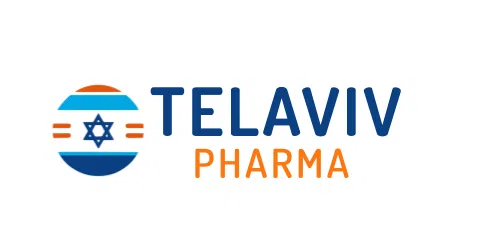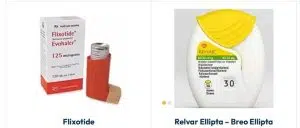
COPD Treatment: 5 Proven Ways to Save Money & Breathe Better
Last Updated on November 4, 2025
COPD Treatment: How to Manage Symptoms and Save on Medications
Contents
- COPD Treatment: How to Manage Symptoms and Save on Medications
- What is COPD?
- COPD Symptoms You Shouldn’t Ignore
- COPD Treatment Options That Actually Work
- How to Afford COPD Treatment Medications
- Lifestyle Changes That Support COPD Treatment
- When to Talk to Your Doctor About Changing Your COPD Treatment
- Living Well With COPD
- Frequently Asked Questions About COPD Treatment
Getting diagnosed with COPD can feel overwhelming. You’re probably wondering what this means for your daily life, your breathing, and yes – your wallet. The good news? COPD treatment has come a long way, and you don’t have to spend a fortune to breathe easier.
Let’s talk about what COPD really is, how to treat it effectively, and most importantly – how to afford the medications you need without draining your savings.
What is COPD?
COPD (Chronic Obstructive Pulmonary Disease) is a chronic lung condition that makes breathing difficult. Think of it as your airways becoming narrower over time, making it harder for air to flow in and out of your lungs.
COPD actually includes two main conditions:
- Chronic Bronchitis – Your airway walls get inflamed and produce extra mucus. This mucus clogs your airways and makes coughing a constant companion.
- Emphysema – The tiny air sacs in your lungs get damaged. When you breathe out, your airways collapse slightly, trapping air inside and making you feel short of breath.
Most people with COPD have a combination of both conditions. While smoking causes about 85% of COPD cases, long-term exposure to dust, chemicals, or air pollution can also lead to the disease.
COPD Symptoms You Shouldn’t Ignore
Early COPD symptoms can be easy to brush off as “just getting older” or being “out of shape.” But catching COPD early means starting COPD treatment sooner, which can slow down the disease.
Watch for these warning signs:
- Shortness of breath during everyday activities (walking, climbing stairs, doing housework)
- Chronic cough that won’t go away
- Coughing up mucus or phlegm regularly
- Wheezing or whistling sounds when you breathe
- Feeling tired all the time
- Frequent chest infections
If you’re experiencing these symptoms, talk to your doctor. A simple breathing test called spirometry can diagnose COPD and help determine the best treatment plan for you.

COPD Treatment Options That Actually Work
Here’s the truth: COPD cant be cured, but it can absolutely be managed. The right COPD treatment plan can help you breathe easier, stay active, and live a full life.
1. Stop Smoking (The Most Important Step)
If you smoke, quitting is the single most effective COPD treatment. Period. Nothing else comes close to slowing down lung damage like stopping tobacco use.
Your lungs will start healing within weeks of quitting. You’ll cough less, breathe easier, and reduce your risk of lung infections. Many people report feeling better within just a few months.
2. COPD Medications
Medications are the backbone of COPD treatment. They work by opening your airways, reducing inflammation, and preventing flare-ups. Let’s break down the main types:
Bronchodilators (Airway Openers)
These medications relax the muscles around your airways, making it easier to breathe. Ventolin is a popular short-acting bronchodilator that works within minutes for quick relief.
Long-acting bronchodilators work for 12-24 hours and are taken daily to keep your airways open throughout the day.
Inhaled Corticosteroids
These reduce inflammation in your airways. They are often combined with bronchodilators for better results. Seretide (Advair) combines both types of medication in one inhaler, which many people find convenient.
Combination Inhalers
Many doctors prescribe combination inhalers because they tackle both airway narrowing and inflammation at once. These are typically more cost-effective than buying separate medications.
3. Pulmonary Rehabilitation
This is like physical therapy for your lungs. A pulmonary rehab program teaches you breathing exercises, helps you build strength, and shows you how to conserve energy during daily activities.
Studies show that people who complete pulmonary rehab programs breathe better, feel less tired, and have fewer hospital visits. According to the National Heart, Lung, and Blood Institute, rehabilitation is one of the most effective non-medication treatments available.
4. Oxygen Therapy
If your blood oxygen levels are too low, your doctor might prescribe supplemental oxygen. Many people only need it during exercise or sleep, while others use it full-time.
Portable oxygen concentrators have become much smaller and lighter in recent years, making it easier to stay active and maintain your independence.
How to Afford COPD Treatment Medications
Let’s address the elephant in the room – COPD medications can be expensive. Really expensive. Many people face the difficult choice between filling their prescriptions and paying other bills.
But here’s what most doctors won’t tell you: you have options.
Why Are COPD Inhalers So Expensive?
A single inhaler can cost $300-500 without insurance in the United States. When you need multiple inhalers every month, the costs add up fast. Many people report spending $400-600 monthly just on their breathing medications.
The high prices have nothing to do with how much the medication costs to make. It’s about patents, middlemen, and a healthcare system that wasn’t designed with patients in mind.
Smart Ways to Save on COPD Treatment Costs
Consider Online Pharmacies
Many people are finding significant savings by ordering their COPD medications from licensed online pharmacies. The same brand-name inhalers that cost $400+ at your local pharmacy might be available for 40-60% less.
Make sure any online pharmacy you use is properly licensed and requires a valid prescription. Legitimate pharmacies will always ask for your prescription before processing orders.
Ask About Generic Options
While not all COPD medications have generic versions yet, some do. Generic medications contain the same active ingredients as brand names but cost significantly less.
Talk to your doctor about whether a generic option might work for you. Even if your exact medication doesn’t have a generic, there might be a similar one that does.
Use Patient Assistance Programs
Most drug manufacturers offer patient assistance programs for people who can’t afford their medications. These programs can provide free or deeply discounted medications if you meet income requirements.
Your doctor’s office can help you apply, or you can search for programs directly on the manufacturer’s website.
Buy 90-Day Supplies
Many pharmacies and insurance plans offer better pricing when you order a 90-day supply instead of 30 days. This simple switch can save you 20-30% over the course of a year.
Compare Prices at Different Pharmacies
The same inhaler can vary by $50-100 between pharmacies in the same city. Before filling a prescription, call around or use online price comparison tools.
Lifestyle Changes That Support COPD Treatment
Medications are important, but what you do every day matters just as much. These lifestyle changes can help you breathe easier and reduce flare-ups:
Stay Active (Even When It’s Hard)
Exercise might seem impossible when you’re short of breath, but staying active actually strengthens your breathing muscles. Start small – even a 5-minute walk counts.
The more you move, the easier daily activities become. Many people find that regular exercise reduces their need for rescue inhalers.
Eat Well to Breathe Well
Good nutrition supports your overall health and gives you energy. Focus on:
- Protein-rich foods (chicken, fish, eggs, beans) to maintain muscle strength
- Fruits and vegetables for vitamins and antioxidants
- Small, frequent meals if large meals make you feel too full to breathe comfortably
- Plenty of water to keep mucus thin and easier to cough up
Avoid Your Triggers
Certain things can make COPD symptoms worse. Common triggers include:
- Air pollution and smog
- Strong perfumes or cleaning products
- Extreme temperatures (very hot or very cold)
- Dust and pet dander
- Respiratory infections
Pay attention to what makes your breathing worse, and do your best to avoid those situations.
Get Your Vaccines
Respiratory infections can be dangerous when you have COPD. Make sure you’re up to date on:
- Annual flu shots
- Pneumonia vaccines
- COVID-19 vaccines and boosters
These vaccines can prevent serious complications and hospital stays.
When to Talk to Your Doctor About Changing Your COPD Treatment
Your COPD treatment plan isnt set in stone. If you’re still struggling with symptoms despite taking your medications, it might be time to adjust your treatment.
Contact your doctor if you experience:
- Increased shortness of breath that doesn’t improve with your rescue inhaler
- More mucus than usual, or mucus that changes color
- Swelling in your ankles or legs
- Frequent chest infections (more than 2 per year)
- Feeling too tired to do daily activities
- Difficulty affording your current medications
Don’t suffer in silence because you think “this is just how COPD is.” Better treatment options might be available.
Living Well With COPD
Yes, COPD is a chronic disease. But it doesn’t have to control your life. With the right COPD treatment plan, affordable medications, and healthy lifestyle choices, many people with COPD continue doing the things they love.
The key is being proactive about your health and finding solutions that work for your situation and budget. Whether that means exploring affordable asthma and COPD medications online, joining a pulmonary rehab program, or simply taking a daily walk – every positive step counts.
Remember: you’re not alone in this journey. Millions of people are managing COPD successfully and living full, active lives. With the right support and resources, you can too.
Frequently Asked Questions About COPD Treatment
What is the best treatment for COPD?
The best COPD treatment combines medications (bronchodilators and inhaled steroids), quitting smoking, pulmonary rehabilitation, and lifestyle changes. There’s no one-size-fits-all approach – your doctor will create a plan based on how severe your COPD is and your specific symptoms.
Can COPD be cured?
COPD cannot be cured, but it can be managed effectively. Early treatment and quitting smoking can slow the progression significantly. Many people with COPD live active, fulfilling lives with proper treatment.
How much do COPD medications cost?
COPD inhalers typically cost $300-500 each without insurance in the US. Most people need 2-3 different inhalers, leading to monthly costs of $400-600. However, cheaper alternatives exist through online pharmacies, generic options, and patient assistance programs.
What happens if I can’t afford my COPD medications?
Never stop taking your COPD medications without talking to your doctor. Instead, explore patient assistance programs, ask about generic alternatives, compare prices at different pharmacies, or consider licensed online pharmacies that offer lower prices. Your doctor can also help find more affordable treatment options.
How often should I use my COPD inhaler?
It depends on the type of inhaler. Maintenance inhalers are typically used 1-2 times daily, while rescue inhalers are used only when you feel short of breath. Always follow your doctor’s specific instructions and never use more or less than prescribed.
Will exercise make my COPD worse?
No – exercise actually helps COPD when done correctly. Start slowly and build up gradually. Pulmonary rehabilitation programs can teach you safe, effective exercises that strengthen your breathing muscles and improve your stamina. Always talk to your doctor before starting any new exercise program.
Are there natural remedies for COPD?
While some lifestyle changes can support COPD treatment (like eating well, staying active, and avoiding triggers), there are no proven natural remedies that replace medical treatment. Always use your prescribed medications and discuss any supplements or alternative treatments with your doctor first.
Can I travel with COPD?
Yes, many people with COPD travel successfully. Plan ahead by bringing extra medications, carrying a letter from your doctor about your condition, and researching medical facilities at your destination. If you use oxygen, contact your airline ahead of time about their policies. Portable oxygen concentrators have made travel much easier for people with COPD.





Add comment